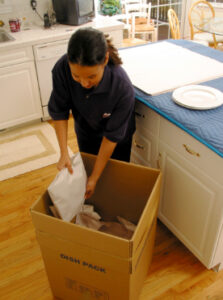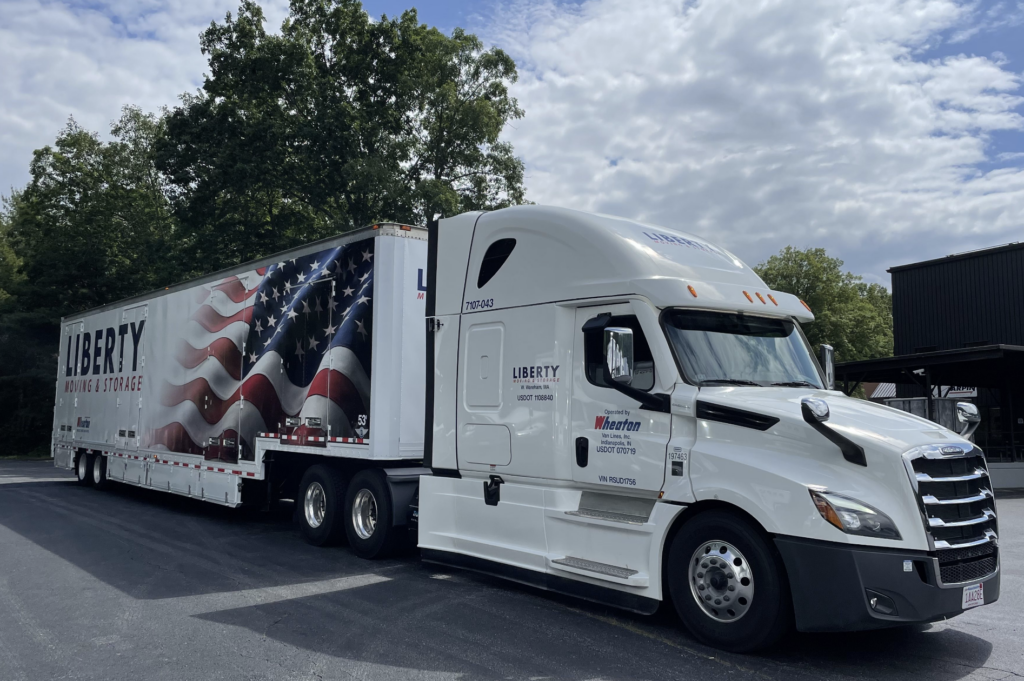 Liberty Moving & Storage understands that packing cartons for a move is not brain surgery. However, it does involve skill, experience, judgement, and understanding to do it well. Without those traits, even packing simple items can turn out to be a disaster. Since Liberty Moving & Storage has been in the packing business for 120 years, we have learned a thing or two along the way about what works for customers who are packing their own things and maybe more importantly, what doesn’t work. Here are the main things customers should avoid when packing.
Liberty Moving & Storage understands that packing cartons for a move is not brain surgery. However, it does involve skill, experience, judgement, and understanding to do it well. Without those traits, even packing simple items can turn out to be a disaster. Since Liberty Moving & Storage has been in the packing business for 120 years, we have learned a thing or two along the way about what works for customers who are packing their own things and maybe more importantly, what doesn’t work. Here are the main things customers should avoid when packing.
- Starting the packing process too close to the load date
- The rubber ball approach
- Not prioritizing what is packed first and what is packed last
- Running out of materials
Starting the packing process too close to the load date.
Packing items into cartons is a time-consuming process that is easily underestimated by the novice packer. Liberty Moving & Storage’s professional packing staff can pack an average room in 1-3 hours depending on how many items are there are and how much space they have to work in. Keep in mind that professional packers are basically emotionally indifferent to the items that they are handling, they are interested in the item’s fragility and where it will go in the carton. They select an item, wrap it up, and place it in the box….no reminiscing about the history of the item….just one…two…three…done.
Customers on the other hand, are very emotionally attached to these items and will inevitably stop and ponder its history. While it is totally natural to be nostalgic about items that you have, especially those items that may have been out of sight for a while. However, all of these extra thoughts takes time away from your packing budget. In reality, you can double or triple the packing time for a customer compared to a professional packer for this reason alone.
Doing the math, that means it will take a novice packer anywhere from 2-6 hours per room (depending on the complexity of the room). Given the fact that most people will only spend 1-2 hours packing at a time, it could take several days to complete just one room. And that’s not even factoring in fatigue, tedium, or interruptions.
The T-shirt slogan out of all of this is…Start early…Work steady…. so you can Be ready…for moving day.
The rubber ball packing approach.
There are enormous differences in the approach to packing a room between a novice packer and the professional packers at Liberty Moving & Storage. The Arpin packers will pack their way through a room in a methodical, rational sequence while the novice packer will usually bounce around like a rubber ball. Here are a dozen or so ground rules to guide your packing process:
- Pack delicate items that are at risk from your own packing process first. These include knick-knacks, decoration, etc. You are at your best as a packer when you first begin, so don’t wait until you are fatigued to tackle the difficult items.
- Conversely, pack easy, durable items last. These include things like clothing and books which require very little concentration to pack.
- Be efficient in your work area set up and maintain good body mechanics. Keep the wrapping area and the cartons you’re packing waist high to avoid excessive bending. Pack what’s close to you and avoid unnecessary movement.
- Don’t handle items more than necessary. Ideally you want to select an item, wrap it, and place it directly in the carton.
- Pack your way through the room in a circular fashion…right to left or left to right…whatever works best for you.
- Leave closets towards the end. They produce the most cartons that will clog up the room.
- Maintain order with the packed cartons. Stack finished packing around the perimeter of the room with the labeling facing out (never only label the top of a carton). Always stack cartons of similar dimensions on top of each other….heavier on the bottom…lighter on the top.
- Leave art items in place on the wall until you’re ready to wrap the item. The wall is the safest place until it’s ready to go directly into the box.
Not prioritizing what is packed first and what is packed last.
 Professional packers from Liberty Moving & Storage typically pack immediately before the move…either the day before or the day of the move. Using this strategy, customers have just a handful of items that may be critical to them; their beds, maybe a lamp, coffee make, TV, or bathroom items. For most customers, packing is spread out over days or weeks. That means that customers will have to make a lot of guesses to determine what they may need in the time leading up to the move. Unfortunately, customers guess wrong many times and end up unpacking cartons looking for needed items already packed away.
Professional packers from Liberty Moving & Storage typically pack immediately before the move…either the day before or the day of the move. Using this strategy, customers have just a handful of items that may be critical to them; their beds, maybe a lamp, coffee make, TV, or bathroom items. For most customers, packing is spread out over days or weeks. That means that customers will have to make a lot of guesses to determine what they may need in the time leading up to the move. Unfortunately, customers guess wrong many times and end up unpacking cartons looking for needed items already packed away.
The underlying principal professions use is to pack the least critical items first and the most critical items last. The goal should be to mimic the pros…nibble away at the non-essential items in the days and week before the move. Leave just the essentials so they can be packed the day before the move in one fell swoop.
Here are some tried and true recommendations to identify priority and non-priority items.
- The first thing to do is to sit down with a calendar on identify any dates where you have appointments with teachers, doctors, lawyers, the DMV, whomever. There may be papers, special clothing, hardware, or other supplies that will be needed. These items should be identified now and separated.
- If you think you “might” need an item, always err on the side of keeping it out rather than packing it.
- Look through drawers and closets to remind yourself of items that you may have forgotten about.
- Be on the lookout for wires, cords, and parts of critical items as you proceed.
- Identify what items are very much out of season. Holiday dishes won’t be needed in July nor will winter coats or boots.
- Identify items that belong to someone who is away at school or traveling. Typically, those items are safe to pack.
- Areas like dining rooms and guest rooms are almost exclusively non-priority areas just before a move.
- Tackle storage areas like attics, basements, and garages that contain items with little likelihood for imminent usage.
Running short of materials
Running short of materials (boxes and paper) is a common occurrence for inexperienced packers. When you run out of a particular size carton, customers usually just choose another size and move on. As a result, many items are inappropriately wrapped, protected, jammed in too tight or are flopping around too loose. A very bad outcome can occur just because the right carton wasn’t available to the customer at the right time.
As we have stated before, the cartons that are closest to professional cartons are available at the bigger home centers like Lowes and Home Depot as well as from the U-Haul store. The most appealing feature of these stores is their willingness to take back unused materials without prejudice.
Liberty Moving & Storage recommends that customers “over buy” by 15- 20% so they have enough of every size. When they’re through, they can just return the unused cartons for a full refund. You pay for just what you needed, and not a cent more.

